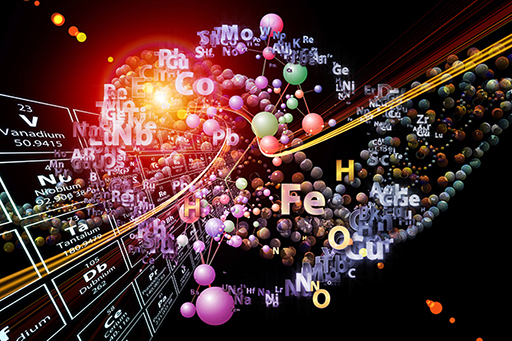2.1 Life chemistry
There are 111 named chemical elements. Each element is abbreviated by one or two letters, usually derived from its name. Some of the symbols are Latin or Greek in origin. Iron, for example, is abbreviated as Fe, from the Latin ‘ferrum’. There are a lot of elements, but which ones are important for life?
Looking at the chemistry of living things, only a very few chemical elements play a key role. To better remember them, the abbreviation CHNOPS is used: Carbon, Hydrogen, Nitrogen, Oxygen, Phosphorus andSulfur. (Note that the chemical symbol for each of these elements is just the first letter in upper case.) In a human body 99.6% of the mass consists of those elements, and only 0.4% is made up by all the other elements we know, such as iron (Fe), calcium (Ca), magnesium (Mg) and sodium (Na). The three most abundant elements in our body are hydrogen (60.0%), oxygen (25.7%), and carbon (10.7%). Most of the hydrogen and oxygen occurs as water (H2O). Carbon forms long and complex molecules that also include oxygen and hydrogen alongside nitrogen. The very same chemistry – with some variation – is common to all life as we know it.

